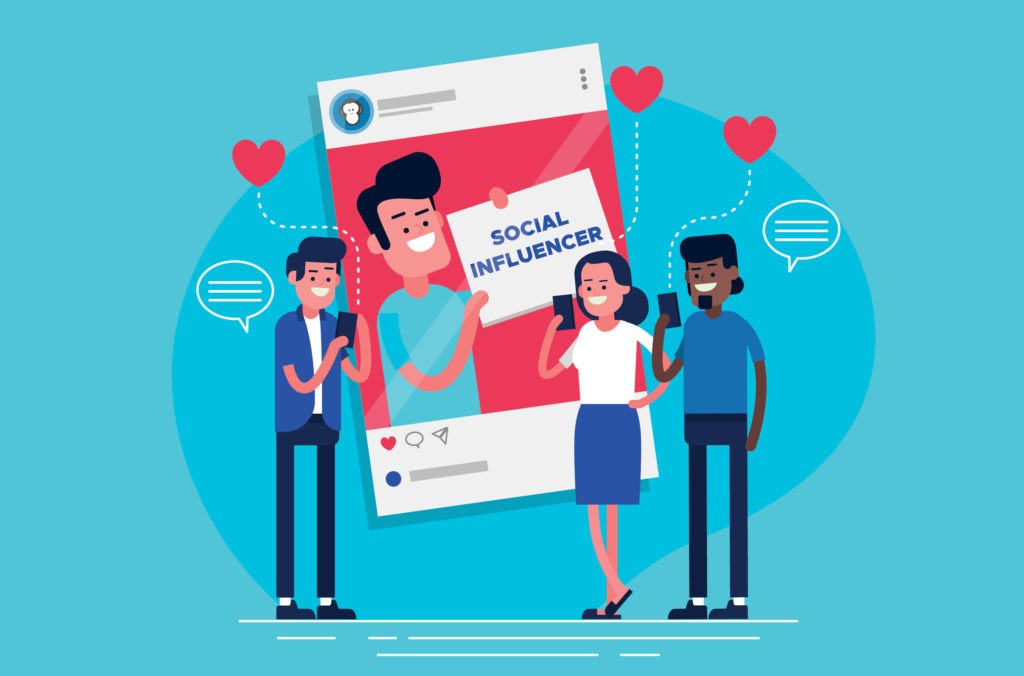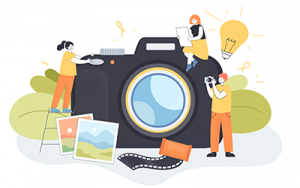Want to become an Instagram influencer? This interview with a current influencer could be useful if you want to learn more about this modern money-making technique. This is just one of the many Side Hustle Ideas you can learn more about at OddsMonkey and make extra money in your free time!
We spoke to @CaraAndTheCubs to find out how she became an Instagram influencer. Cara currently has 37.7k followers and works with brands to promote products and services. Here she shares her top 5 tips for anyone looking to become an Instagram influencer. If you are looking for a more obscure side hustle, check out the 7 unusual ways to make money guide at Lottomart.
Tell us a bit about yourself…
I’m Cara, mam to Tom and Kit. I work as a health care assistant in the NHS and have the least Instagrammable life imaginable. I’ve got no marketing experience at all, so I really am just an average mam who got lucky.
Although I’ve created content for brands in return for gifted products for a few years now, I only recently started earning real money for what I do on Instagram.
When did you start your Instagram account?
It started as my personal account in 2013. But I didn’t start actively gaining followers and purposely creating content for other people until I had Tom in 2015.
Was the goal always to become an Instagram influencer?
No, not at first. Instagram influencers weren’t even something I was aware of back then. My cousin had a baby at around the same time as I had Tom. She shared a picture of our babies together in little bear costumes and tagged a well-known baby page. They reposted the image…
From there, it was posted hundreds of times on other baby and lifestyle pages. I still see it pop up sometimes 4 years later. And the followers started flooding in. I started tagging baby and lifestyle pages in my images and using relevant hashtags. Every time a big page shared a picture, I would wake up to hundreds of new followers.
How did you build your network?
I didn’t purposely work on building a network until around a year ago. A few of my pictures went viral, and I gained followers quickly. This gave me the upper hand when Instagram started introducing and changing its algorithms. I feel like it’s so much harder to build an audience now.
One interesting thing I noticed was that my followers were often from overseas. My photos were apparently very popular in Brazil and Turkey. But a lot of overseas followers engaging with my content isn’t very relevant to UK brands.
I now work on engaging with relevant accounts much more than I did before. Making a real connection is important. I make sure I reply to comments and comment back on people’s photos. It’s great to find like-minded people on Instagram, and I’ve made a few great friends. I love to fill my feed with images that inspire me.
How did you start working with brands?
The first brand I ever worked with messaged me. They’d seen one of our pictures on a baby page. It was a nappy cream company from the US, and they sent me a sample. I remember being so excited to get my first freebie!
I’ll sometimes get messages from small companies who have seen my pictures, but most of the time, I reach out to brands. I usually tell them a little bit about me, what I offer, and why I’d love to work with them.
Over the years, I’ve worked with a few PR companies that make the process much easier. They usually represent a few different clients and get in touch if the brands they represent have any new products they would like me to feature.
If you approach a brand, ensure your ethos and style align well with theirs. Brands are much more likely to agree to work with people whose content style fits the product well. For example, as a parenting page posting images of children, I’m not likely to land a collaboration with Jack Daniels… I mean, I need it more than most(!), but I’m not the kind of influencer they’re looking for.
I didn’t get paid for content until very recently because I didn’t really understand how paid content worked or what amounts of money I should be asking for. When I searched online for answers, it was all a bit secretive, and I felt stupid asking other people.
Are there any tools that you use to find brands or that you know brands use to find you/influencers?
TRIBE is an app that I use a lot. Brands post a brief outlining what they’re looking for. They usually include some sample images and a list of do’s or don’ts so you can see what type of content they’re likely to accept. Influencers will need to buy the product themselves and then submit their content, along with their caption and fee. The brand then reviews the submission and chooses to accept or decline.
If you find this interesting, check out our write reviews for money UK guide at OddsMonkey.
One thing I like about TRIBE is that you set your own fee. Another thing is that you only submit content you’re happy with. Even though you follow guidelines, you’re in control of what you create. But it can be disheartening because you could get declined 50 times before you get accepted. I would say only 1 out of 10 of my submissions is successful, but I get one or two paid ads a month. This really helps to top up my income. Remember to declare any extra income over 1k to the taxman.
TRIBE is used by all types of Instagram influencers (food, beauty, lifestyle) and posts jobs from big companies (such as Cadbury and Palmolive) as well as smaller local brands.
One of my favourite things about TRIBE is that they offer a guide for what to charge per post. What you decide to charge can vary depending on your follower count, engagement, or how much work you’ve put into a submission. I tend to charge between £80-£150 per post and £50 per story. I’ve had brands haggle me down if their budget is tight. If I charge towards the upper end of what TRIBE suggests, I usually get declined. As you’d probably expect, there’s a lot of competition for some of the more popular campaigns.
Have you experienced any negativity or bad experiences as an Instagram influencer?
Not really. I’ve met many amazing people through Instagram and found small businesses I love. I’ve had the odd person ask me if I’ve bought followers, to which the answer is: No, I couldn’t afford to!
I have received products in the past that I just don’t get on with. In situations like that, I return an item if I can’t honestly recommend it.
Like most people using social media, I’ve had some mean comments on posts. Sometimes about my breastfeeding or about my weight. I’ll either ignore these comments or block and delete the account if they are very rude.
Have you experienced any mum shaming, and if so, how did you deal with that?
To be honest, I’ve dealt with more shaming from mams outside of Instagram. For example, I’ve had acquaintances tell me I’ve been talked about in their group chats. Or people saying I sell my child for free things and bitching about the ethics of what I do. Sharing your personal life isn’t for everyone, and that’s fine, but please be kind. I’m just sharing these pictures and experiences because I love doing it. I’m sure they wouldn’t give as much stick to a mam who put their children forward for modelling jobs and got featured in magazines, but it’s a pretty similar thing.
Can you tell us a little bit about what goes into working/dealing with a brand?
If I want to contact a brand myself, I will usually have a little search to see if they work with a PR company or if they have their own dedicated PR team member that I can email directly to save me from getting lost in a customer services inbox. Then I will send a short email introducing myself and telling them why I would love to work with them. I used to send over a media kit, but I’ve found most brands have their own ways of finding your engagement levels these days and will view your profiles themselves anyway.
If a brand replies with a yes, then great! We will work out the specifics like how many posts, stories, or blog posts in what amount of time, and they sometimes send me a trackable link to use in Swipe Ups or a personal discount code to share with my followers.
Do you have a content plan?
I usually post between 6 and 7 pm once the kids are in bed and I have time to sit down. It’s the same for most parents, so I find this is when I get the most engagement from other parents and Influencers. I find video content gets more views and comments than photos. And driving traffic to your post via stories (advertising a new post on Stories) can also help.
I haven’t had enough paid posts to have this issue, but friends who get a lot of work have recommended spacing out #ad posts. If every post is an ad, your followers may feel you lose some authenticity, and brands don’t want to feel they are sandwiched between other ads, especially if they could be competing for customers. So make sure you share a few organic posts between ads or gifted ones.
How does Instagram fit into your life?
Sometimes it doesn’t. Some days I have no motivation to take a nice picture, or I haven’t got time to think of a witty caption. And sometimes, I get frustrated because an idea I’ve had didn’t work like I imagined it would. On days like that, I just leave it. Unless I have branded content to create and post, I don’t stress about posting every day or my engagement levels dropping a little. I’ve been at the point where I’ve let it bother me in the past and had to give my head a wobble because this isn’t real life. Real life is hard enough without the pressure to be perfect on Instagram.
I love taking pictures of my boys and sharing them, and I enjoy talking with other parents and sharing their lives online too. If I find I’m not enjoying it, then I take a break. But for me, spending time on Instagram is something I enjoy. Once the kids are in bed, and we can chill, I’ll spend an hour or two browsing and engaging.
How important is the number of followers you have?
I’d be lying if I said it’s not important to me. Since the changes Instagram made to its algorithm, I’ve seen my followers slowly decrease, and it’s not a nice feeling. It’s definitely harder to grow your following these days organically.
But I know that for brands, good engagement is much more important than a large following, so I’ve been focusing more on boosting engagement lately, mainly by spending more time engaging with other similar pages. It’s not quick, but it is rewarding to see your reach grow.
How easy is it to maintain an audience?
So much harder these days. Most of my followers started following me when Tom was a baby and loved his cute baby pictures in sweet little outfits. As he got older, it got harder to take posed photos of him; followers didn’t care so much or lost interest and unfollowed.
One issue I faced was that although my followers are from all over the world, I had a low % of British followers initially, which is obviously off-putting for British brands. As an influencer, I can see my audience demographics, and 6% of my followers are Brazilian! So I’ve worked hard to up my engagement with British accounts and make my content more interesting to a British audience. At the moment, about 13% of my 41k followers are British, but I’d love that to be closer to 25%
Where do you get inspiration for posts and captions from?
I try to keep my captions brief because writing isn’t my strong point. A short, punchy caption can be easier to read than a long, rambling one. However, longer captions encourage people to stay on your posts for longer, which can affect the algorithm. Including a question for your followers to engage with is a great idea.
How successful do you find competitions and loops to build your following and engagement levels?
Loops are a great way to boost your following and find other like-minded Instagrammers or business pages you might be interested in. I’ve taken part in a few loops and made connections with other parents that I otherwise might not have. I know ‘follow loops’, and competition can be frowned upon, but organic growth can be very difficult these days. Sometimes we’ve got to give each other a little boost.
But follower numbers are becoming less and less important to brands as they focus more on engagement.
Engagement is about how many likes, comments, saves or shares your posts get or how many views your stories get. So you could have 100k followers, but if only 200 people are liking your post, then a brand may rather work with an influencer who has 5k followers but gets 500 likes per post. Because of this, influencers are now focusing more on building engagement rather than followers, and engagement pods are becoming popular.
Engagement pods are usually small chats with 15-25 people in them. The aim is that you all interact with each other’s posts. Obviously, Instagram will frown on this because you’re basically cheating the algorithm into thinking that your post is more popular than it is so that you appear on more news feeds. But they can be a great way to up your engagement!
Top 5 Instagram tips
- Know your niche
- Engage, engage, engage
- Get on the books of a PR company
- Sign up to TRIBE
- Know the legal guidelines around influencer marketing
Thanks to Cara for sharing how she became an Instagram influencer. If these tips have inspired you, check out our complete guide on how to make money on Instagram.
Other ways to make money online
Here at OddsMonkey, we offer a greater range of guides to different types of side hustle ventures you can try out today. Whether you are looking to find more information on a side hustle idea you’re already aware of or want to see the different methods of making extra money
If you are interested in a low-risk side hustle, reading into making money with matched betting may be worth a go. There is a great selection of guides on various different ways to earn a bit of extra money on the side here at OddsMonkey, from freelancing to retail arbitrage.






